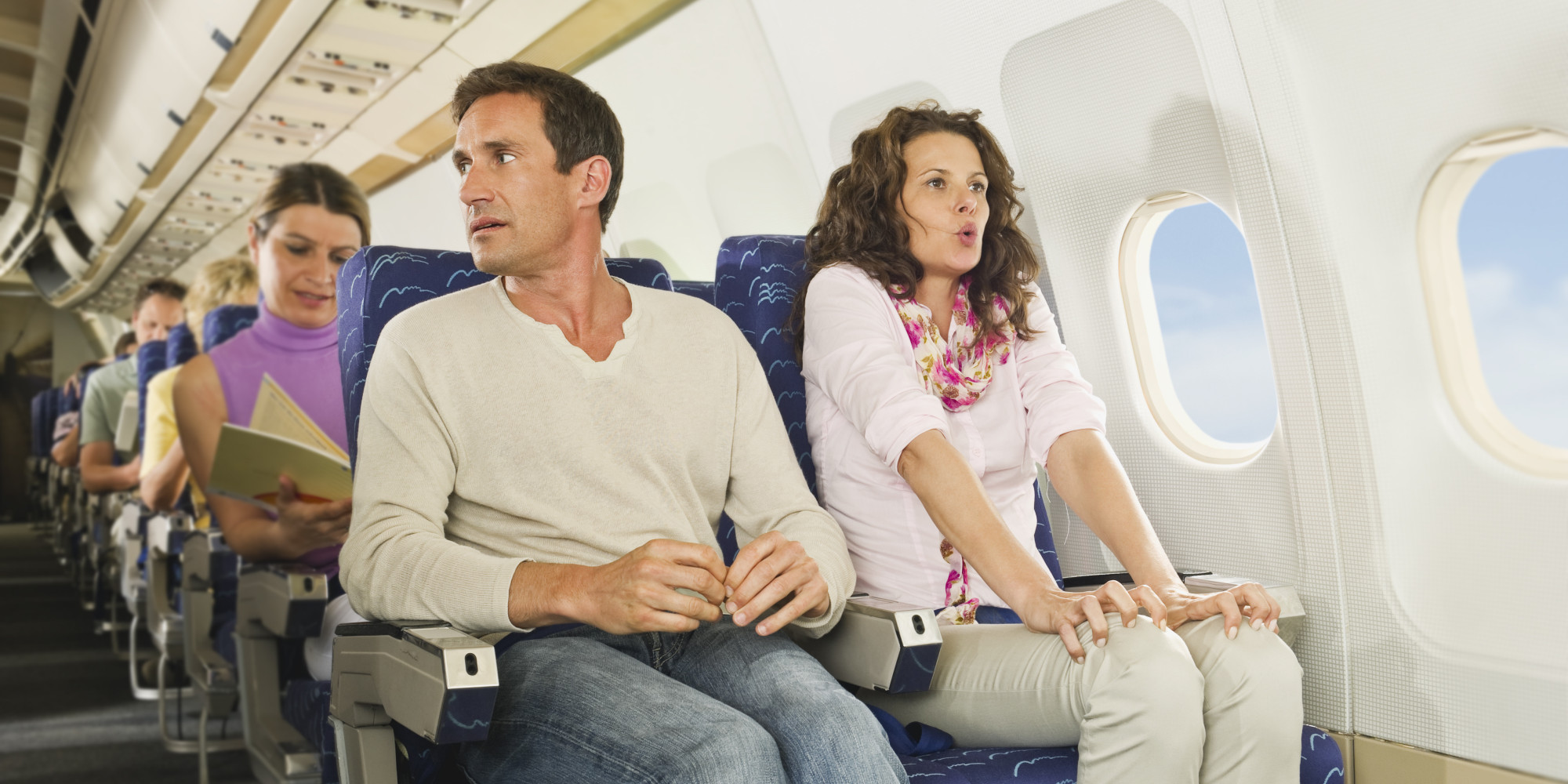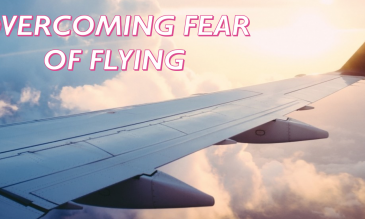If you get nervous flying, you’re not alone. People who experience hardly any fear at all in life still get queasy stomachs – and anxiety – when they’re in the air. This includes businessmen who speak in front of crowds on a regular basis – and many others who place worries behind them regularly so they can live full lives.
There’s just something about being 30,000 above the ground – and placing complete trust in others – that requires a brave step out of our comfort zone.
But, that’s what makes some people so effective and successful in life, right?
The ability to shift focus from fear to what one wants in life is powerful, and it’s something that you can do.
Because, you know that fears associated with flying are fears based on the irrational, don’t you? Flights go up and down every second of the day, and we very rarely hear of anything bad happening on an airplane.
To overcome being nervous while flying and fears of flying, we need to think more about the fact that reason says flying is safe – and we need to concentrate on the fact that most of the time we’ll be better off for choosing to fly.
Do you know that 25 million Americans share a fear of flying? Some entertain this fear at lesser degrees than others.
And, there are a variety of reasons why people get anxious in airplanes. But, the bottom line is this fear is almost always based on worry about something that probably won’t happen – and it stops many from taking trips that they would benefit from.
If you get nervous flying because you’re scared of heights, closed spaces, germs, or anything else that might be associated with being in an airplane, read our list of relaxation tips to help you focus on how safe you are and how at ease you can be if you choose to.
Try 1 to try – or practice them all. And, know that you can overcome any fear or worry when you put your mind to it.
Prepare Mentally for Flying
When you’re contemplating an upcoming flight, you may wonder about a lot of things: the safety of the aircraft, the weather, the experience of the crew, security, etc. It’s important when fears come up about flying that you look at them as just that. Fears.
Fears that are based on something you’re thinking about – not anything based on overwhelming evidence.
Overwhelming evidence says that air travel is safe, despite rare occurrences to the contrary. If you consider how many flights take off and land daily – around the world – without any problems or issues, the numbers point to flying as an extremely safe mode of travel.
Airplanes are the safest way to get where you’re going (safer than walking or riding in a car, which we typically do every day).
The New York Times says that a person can fly every day for 123,000 years and have almost 100% percent probability of staying safe.
Bring Distractions for Flying
Even when you’re prepared for your flight – and you’ve thought through every reason why you might be hesitant about flying – you could end up in your airplane seat and have fear kick in again. It’s okay.
Conquering fear is something that takes practice. Just like any habit – good or bad – getting rid of a fear of flying is something needs to be reinforced.
So, make it a habit of bringing distractions on the plane with you so you’re thinking about fun, happy things.
Pack DVD’s, books, puzzles, knitting projects in your carry-on – or anything else that will distract you from fears that enter your head in-flight.
Put some games on your iPad or phone – or bring a movie to watch on your computer. Take note of how long you’ll be in the air and make sure you have activities with you that will get you through the entire flight.
Practice Deep Breathing Techniques
The breath and fear are closely related. When we are scared, our breath gets quick and shallow – which sometimes scares us more and then we enter a full-on (hard to get out of) snowball spiral of fear.
Learning how to slow down our breath and control it helps us manage our fears.
A great technique for controlling the breath – and fear – when flying is breathing in through your nose and then out through your mouth.
To do this, sit still and focus on your breath. For a minute, really pay attention to your breathing and notice your ability to control it when you want to. You don’t have to be a victim to your breath.
To calm nerves, slowly breath in from your nose (try a inhale of 3 seconds) and then breath out through your mouth (with a purposeful exhale of 3 seconds).
Close your eyes or keep them open. Do this for as long as you need to – until you realize that you are in control of your mind and the way your body reacts to things.
Meditate While Flying
Meditation is a way to bring our thoughts and our breath to our attention – at the same time.
Through meditation, we notice any fears or anxieties that we may be experiencing – and we purposefully let them go.
Then, we replace these fears or anxieties with positive thoughts and feelings.
Try meditating on a plane with your eyes closed, so that any distractions (people, lights, etc.) around you are not influencing the new thoughts and feelings you’re going to fill yourself with.
With your eyes closed, let anything that comes to you come: fear, anxiety, worry, or anything else.
Then, with intention, tell yourself that these things are not rational and that you are safe.
Think about why you are safe. The pilots and crew are experienced, your airplane has been safety checked, and everything else has been prepared for. Repeat to yourself as many times as you need to: “I am safe.” “Flying in an airplane is safe and it’s done safely all of the time.”
Release any fear-filled thoughts and tell yourself that you no longer need to feel that way. Today – now – you are safe.
Just like most everything in life, getting through something – or over it – is a process. Be patient with yourself as you release whatever is causing you fear – and replace it with thoughts of safety.
It may take you just 1 flight using these relaxation tips for nervous flying, or it might require 10. Just know that you can overcome your fear of flying if you want to badly enough.

 En
En Es
Es Fr
Fr











